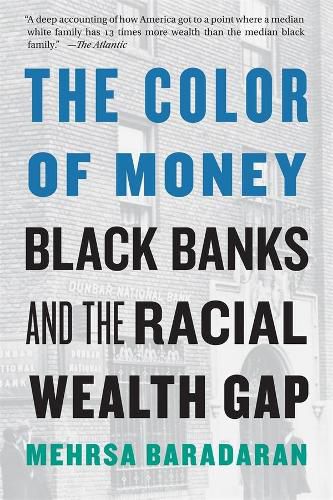Readings Newsletter
Become a Readings Member to make your shopping experience even easier.
Sign in or sign up for free!
You’re not far away from qualifying for FREE standard shipping within Australia
You’ve qualified for FREE standard shipping within Australia
The cart is loading…






Read this book. It explains so much about the moment Beautiful, heartbreaking work.
-Ta-Nehisi Coates
A deep accounting of how America got to a point where a median white family has 13 times more wealth than the median black family.
-The Atlantic
Extraordinary Baradaran focuses on a part of the American story that’s often ignored: the way African Americans were locked out of the financial engines that create wealth in America.
-Ezra Klein
When the Emancipation Proclamation was signed in 1863, the black community owned less than 1 percent of the total wealth in America. More than 150 years later, that number has barely budged. The Color of Money seeks to explain the stubborn persistence of this racial wealth gap by focusing on the generators of wealth in the black community: black banks.
With the civil rights movement in full swing, President Nixon promoted black capitalism, a plan to support black banks and minority-owned businesses. But the catch-22 of black banking is that the very institutions needed to help communities escape the deep poverty caused by discrimination and segregation inevitably became victims of that same poverty. In this timely and eye-opening account, Baradaran challenges the long-standing belief that black communities could ever really hope to accumulate wealth in a segregated economy.
Black capitalism has not improved the economic lives of black people, and Baradaran deftly explains the reasons why.
-Los Angeles Review of Books
A must read for anyone interested in closing America’s racial wealth gap.
-Black Perspectives
$9.00 standard shipping within Australia
FREE standard shipping within Australia for orders over $100.00
Express & International shipping calculated at checkout
Read this book. It explains so much about the moment Beautiful, heartbreaking work.
-Ta-Nehisi Coates
A deep accounting of how America got to a point where a median white family has 13 times more wealth than the median black family.
-The Atlantic
Extraordinary Baradaran focuses on a part of the American story that’s often ignored: the way African Americans were locked out of the financial engines that create wealth in America.
-Ezra Klein
When the Emancipation Proclamation was signed in 1863, the black community owned less than 1 percent of the total wealth in America. More than 150 years later, that number has barely budged. The Color of Money seeks to explain the stubborn persistence of this racial wealth gap by focusing on the generators of wealth in the black community: black banks.
With the civil rights movement in full swing, President Nixon promoted black capitalism, a plan to support black banks and minority-owned businesses. But the catch-22 of black banking is that the very institutions needed to help communities escape the deep poverty caused by discrimination and segregation inevitably became victims of that same poverty. In this timely and eye-opening account, Baradaran challenges the long-standing belief that black communities could ever really hope to accumulate wealth in a segregated economy.
Black capitalism has not improved the economic lives of black people, and Baradaran deftly explains the reasons why.
-Los Angeles Review of Books
A must read for anyone interested in closing America’s racial wealth gap.
-Black Perspectives